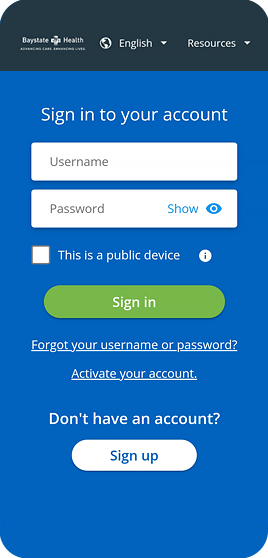Nontuberculous Mycobacteria
Nontuberculous mycobacteria are bacteria normally present in soil, water and dust. There are more than 190 types of nontuberculous mycobacteria found naturally in the environment.
Most people who are exposed to them never get sick from them. The organism gets cleared from the lungs by the body’s natural defense system before it can cause infection.
Unfortunately, both healthy individuals and those with compromised immune systems can get lung disease from inhaling nontuberculous mycobacteria. Other nontuberculous mycobacteria organisms can cause disease in areas of the body, including lymph nodes, skin, soft tissue and bones.
The severity of the disease, treatment options, and recovery timeline vary from person to person. Factors that can influence the impact of NTM lung disease include:
- The strength of the bacteria in a person’s lungs
- The amount of their exposure
- Their overall health
With proper diagnosis and treatment, many people can manage their NTM lung disease symptoms and maintain a good quality of life. Early diagnosis and comprehensive care are crucial to keep the disease from progressing.
Referrals to the Baystate Health Bronchiectasis and Nontuberculous Mycobacteria Clinic
Understanding and managing NTM lung disease requires collaboration from experts in areas including pulmonology, infectious disease and physical therapy. Baystate Health’s Bronchiectasis and Nontuberculous Mycobacteria Clinic can help you determine the severity of your condition and develop the right treatment plan for your situation.
To be seen at our clinic, you’ll need a referral from your doctor. You can start the process by completing the referral form below.
Learn More About NTM Lung Disease
NTM lung disease can’t be passed between people. It’s not contagious. The most common nontuberculous mycobacteria in the U.S. is Mycobacterium avium complex (MAC). Most NTM lung disease infections in the U.S. is caused by MAC.
There are two types of NTM lung disease:
- The milder form is nodular bronchiectasis. This form causes inflammation of the airways, which leads them to become damaged and scarred and lose their ability to clear mucus normally.
- The more severe form is cavitary disease. This form causes scarring, fibrosis and the formation of cavities or pits in the lung tissue, which can lead to respiratory failure.
Some people are at higher risk of getting an
NTM lung infection and developing NTM lung disease. That includes:
- People with damaged lungs from diseases such as bronchiectasis, COPD, cystic fibrosis, silicosis or a previous tuberculosis infection
- Those with weakened immune systems from an autoimmune disorder like rheumatoid arthritis or Sjogren’s disease, or an active HIV infection
- Those who take immune-suppressing medications, including prednisone and chemotherapy drugs
- Women who have gone through menopause
- People over 65 years old
There are environments that can increase the risk of nontuberculous mycobacteria exposure, which in turn can increase the risk of NTM lung disease. They include:
- Activities that stir up dirt and dust increase the likelihood of breathing in the organisms.
- Nontuberculous mycobacteria thrive in water and are commonly found in municipal water supplies and household plumbing. They are resistant to disinfectants such as chlorine and can survive at high temperatures, making showers, hot tubs, etc. potential sources of exposure.
Nontuberculous mycobacteria cause symptoms like chronic and non-resolving pneumonia, which means the pneumonia keeps coming back or won’t go away. Common symptoms of NTM lung disease include:
- Chest pain
- Cough with sputum (mucus) production
- Hemoptysis (coughing up blood )—a late sign of the illness
- Low grade fever
- Night sweats
- Recurring respiratory infections
- Shortness of breath
- Tiredness or fatigue
- Unexplained loss of appetite and weight
It can be hard to distinguish between who is just carrying the nontuberculous mycobacteria and who is sick with NTM lung disease.
Diagnosing NTM lung disease requires tests that show both the:
- Presence of NTM bacteria
- Evidence of NTM lung disease
In addition to taking your medical and physical history, and looking at your ability to breathe, your doctor could order several tests, including X-rays and CT scans. They might also:
- Look at a sample of your sputum (mucus) under a microscope to see if nontuberculous mycobacteria are present
- Try to grow nontuberculous mycobacteria from that sample
Your doctor will determine which tests are best for your situation. To get the sample from your lungs, they might need to do a bronchoscopy, which uses a thin, flexible tube called a bronchoscope inserted through your nose or mouth.
If your doctor thinks other parts of your body might be affected, you might need to have a fluid sample or tissue biopsy taken from those areas.
Treating NTM lung disease is usually done by a lung or infectious disease specialist familiar with nontuberculous mycobacteria infection, as you’ll need close follow-up during treatment.
The specific treatment your doctor uses to treat your NTM lung disease depends on the exact species of nontuberculous mycobacteria causing the disease. Treatment will be based on your symptoms and results of your culture and other test results. Typically, NTM lung disease is treated with three or more antibiotics and follow up mucus culture samples. The mucus sample cultures are continued until your results are negative for 12 to 18 months.
Other therapies such as airway clearance may also be used.

Your Health Record, the Way You Want it
Get Started
Back to Top

